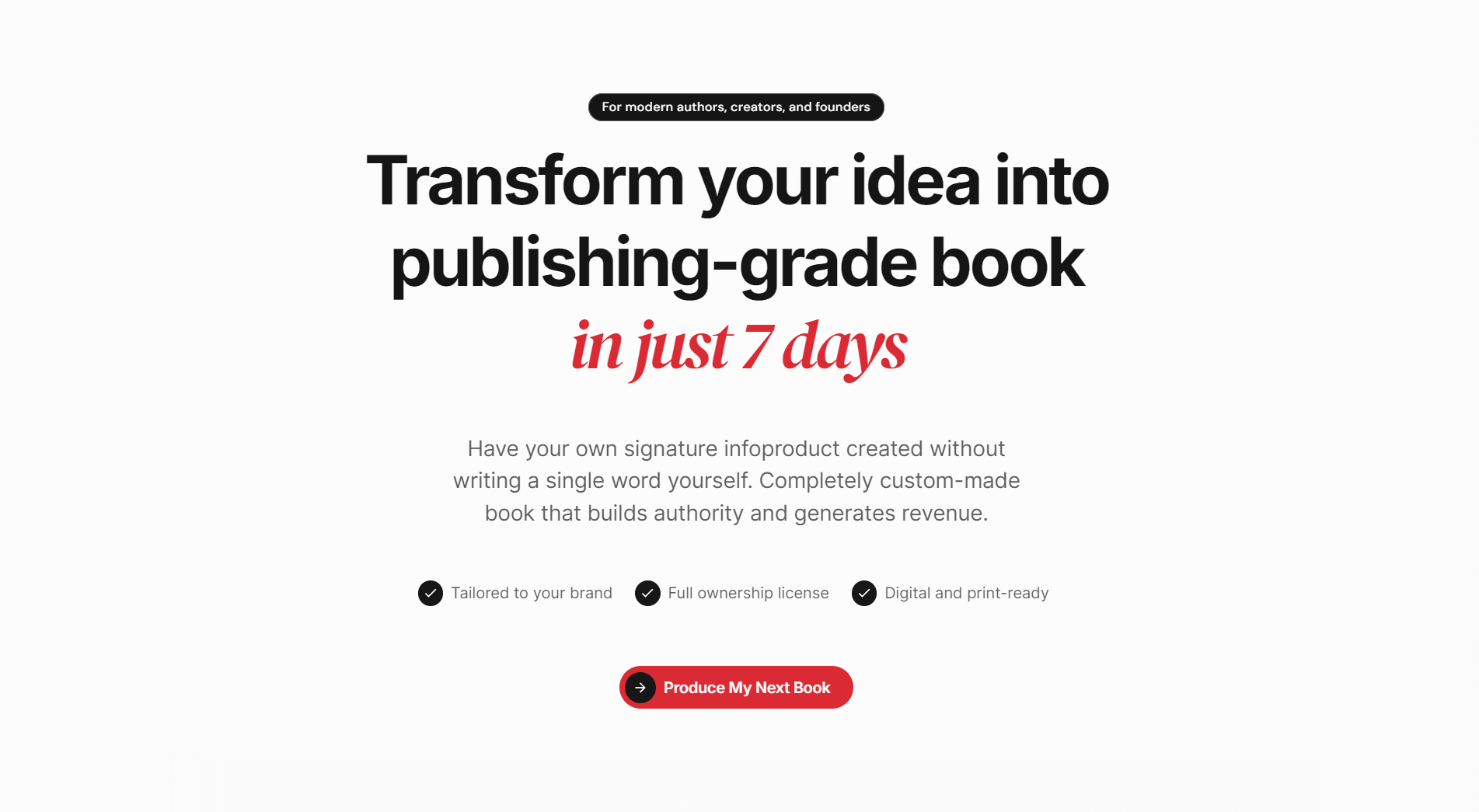It started with a promise I made to myself 6 months ago—to finally act on limited-time deals instead of overthinking. While clicking through an online store on a lazy Sunday, a bold countdown timer ticked away my indecision—and I hit buy, heart pounding. Why do these ticking clocks work so well? From my own impulse buy to case studies and psychological secrets, let's unravel how marketers wield urgency, with plenty of real-life flavor and less of the usual lecturing.
Winning the Mental Game: The Psychology of Countdown Timers
Let’s face it—nobody likes missing out. That gut-twisting feeling when you see “Only 2 hours left!” on a deal you’ve been eyeing? That’s FOMO (Fear of Missing Out) at work, and it’s the secret sauce behind the most effective urgency tactics in digital marketing. Just ask anyone who’s ever hesitated on a Black Friday deal, only to return minutes later and find the “last chance” item sold out. The regret lingers, and businesses know it.
According to R. van Santen, Founder of AllInOneWeb.SOLUTIONS Agency, “Countdown timers have a unique power over human psychology. They tap into our primal fear of missing out and nudge decision-making in remarkable ways.” It’s not just a hunch—research shows that 85% of shoppers admit to making impulse purchases when faced with time-limited offers. That’s a staggering number, and it highlights the psychological impact of visible deadlines.
So, what’s happening in our brains when that digital clock starts ticking down? Studies indicate that visible countdown timers trigger a sense of urgency, pushing us to act quickly before the opportunity slips away. This “ticking clock” effect accelerates decision-making, shortens the sales cycle, and—crucially—reduces hesitation. In fact, 42% of consumers report feeling genuine excitement when they see a countdown timer. That rush isn’t just good for the customer; it’s great for urgency in sales.
It’s not all about anxiety, either. There’s a thrill in racing against the clock. The anticipation, the sense of competition, and the possibility of snagging a deal before anyone else—all of these emotions combine to make countdown timers irresistible. Businesses harness this energy to drive conversions, reduce cart abandonment, and create memorable shopping experiences.
But it’s not just theory. Countdown timers have proven results. When used strategically—like placing them above the fold or near a call-to-action—they grab attention and keep visitors focused on the offer. The key is authenticity: timers must reflect real deadlines. Fake or endlessly resetting timers can backfire, eroding trust and damaging brand reputation.
Personal stories drive the point home. Imagine a shopper who missed out on a flash sale because they hesitated, only to watch the timer hit zero. That sting of regret? It’s what makes the next countdown impossible to ignore. The art of urgency is about turning hesitation into action—and countdown timers are the ultimate tool for winning that mental game.
Countdown Benefits in Real Life: Boosting Engagement and Sales
Countdown timers aren’t just flashy design elements—they’re proven tools for boosting conversion rates and driving real business results. The numbers don’t lie: research shows that campaigns using countdown timers can see a 231% higher click-through rate and up to 200-400% increases in conversions during promotional periods. But what does this look like in the wild? Let’s dive into how brands—both global and local—are using countdown timers to turn hesitation into action and create surges in engagement and sales.
From Data to Dollars: The Diamond Store’s Black Friday Breakthrough
Consider the case of The Diamond Store, a jewelry retailer that decided to experiment with countdown timers in their Black Friday email campaigns. The results were nothing short of jaw-dropping: a 400% increase in conversions compared to previous campaigns. By embedding a dynamic timer directly in their emails, they made their limited-time offers impossible to ignore. Customers felt the pressure of the ticking clock and responded with clicks—and purchases.
SaleCycle's data reveals countdown timers consistently lift click-through rates and conversions.
This isn’t just a one-off success. According to SaleCycle, countdown timers deliver an average 231% increase in click-through rates across campaigns. That’s not just a bump—it’s a leap. When urgency is visible, people act faster. It’s the classic “fear of missing out” (FOMO) in action, and it’s a cornerstone of conversion optimization.
Local Flavor: A Jamaican Bakery’s Limited-Time Loaf Sellout
It’s not just big brands reaping the rewards. Picture a small bakery in Jamaica, known for its artisan loaves. They decided to run a flash sale—“Fresh-baked sourdough, available for the next 2 hours only!”—with a countdown timer on their website and social media. The result? Every loaf sold out before the timer hit zero. The timer didn’t just boost sales; it sparked excitement and got people talking.
Why Timers Work—And Where to Use Them
Emails: Timers double click-to-open rates during sales events.
Landing Pages: Timers near CTAs reduce bounce rates and drive immediate action.
Cart Abandonment: Timers at checkout nudge hesitant shoppers to complete their purchase.
The marketing effectiveness of countdown timers is clear. Whether you’re running a global campaign or a neighborhood flash sale, these tools make your offers impossible to ignore—and your results impossible to miss.
Urgency, Without Overkill: Best Practices and Common Mistakes
Countdown timers are powerful tools in the world of conversion optimization, but there’s a fine line between strategic urgency and overkill. AllInOneWeb.SOLUTIONS Agency’s guide, authored by Glenford Scott, highlights how urgency strategies can transform hesitation into action—if you avoid the common traps that undermine their effectiveness.
Where (and When) to Place a Timer for Maximum Punch
Placement is everything. For maximum impact, timers should appear above the fold—right where visitors land—so the sense of urgency is immediate. Placing countdown timers near primary calls-to-action (CTAs) on landing pages, checkout forms, or even in promotional emails ensures they’re seen at the critical decision-making moment. Social media ads and PPC campaigns also benefit from timers, especially when the offer is truly time-sensitive. The key? Match the timer’s location to the user’s journey and the campaign’s goal.
Why Overusing Timers Kills Their Magic
It’s tempting to slap a countdown timer on every page, but research shows this backfires. Overuse leads to what experts call urgency fatigue—users become numb to the pressure and start ignoring the timers altogether. AllInOneWeb.SOLUTIONS recommends using timers sparingly, reserving them for genuine, limited-time offers. This keeps the urgency authentic and the impact strong.
Pitfalls: Fake Deadlines, Garish Designs, and Ignoring Mobile Users
Fake deadlines: Timers that reset on every visit or display false expiration dates erode trust. Only use deadlines you can prove.
Garish designs: Clashing colors, cluttered layouts, or oversized fonts distract rather than drive action. Stick to visual design best practices—bold but readable fonts, high contrast, and minimalism that fits your brand.
Ignoring mobile users: With so much traffic coming from smartphones, timers must be mobile responsive. Poor integration here means lost conversions and frustrated users.
Pro Tips for Marketing Effectiveness
Always blend countdown timers with your brand’s look and feel. Test for device compatibility, and ensure timers are polished and integrated—not tacked on as an afterthought. As Glenford Scott puts it:
“A countdown timer is only as effective as its honesty and its harmony with your brand.”
In short, the art of urgency is about balance. Authenticity, strategic placement, and seamless visual design are the foundation of marketing effectiveness—and the difference between a conversion boost and a credibility bust.
Going Beyond the Countdown: Creative Integration and Advanced Tactics
Countdown timers have become a staple in the digital marketing toolkit, but the real magic happens when brands move beyond the basics. Today’s most effective marketing tools don’t just slap a timer on a landing page—they weave dynamic timers and advanced tactics into every touchpoint, creating a seamless sense of urgency that feels both personal and authentic.
Let’s start with dynamic timers. Instead of a generic clock ticking down for everyone, dynamic timers personalize urgency for each visitor. Imagine landing on a product page and seeing a tailored 10-minute offer just for you. Research shows that this kind of individualized countdown can dramatically boost customer engagement and conversion rates. According to industry studies, countdown timers have increased conversion rates by up to 400% in some campaigns, especially when the urgency feels real and relevant.
But why stop there? Pairing countdown timers with scarcity cues—like “Only 5 left!”—or sprinkling in social proof (“Over 200 people grabbed this deal today”) doubles the impact. This combination taps into the powerful psychological drivers of FOMO and herd mentality. As R. van Santen of AllInOneWeb.SOLUTIONS Agency notes, “The future belongs to brands that personalize not just offers, but urgency itself.” When customers see both a ticking clock and limited availability, hesitation melts away and action takes center stage.
Integration is another game-changer. The most forward-thinking brands synchronize their countdown timers across every channel—email, social media, website, and even PPC ads. This cross-channel approach ensures that the sense of urgency follows the customer wherever they go, reinforcing the message and maximizing marketing effectiveness. For example, a timer in an email campaign matches the one on the landing page, while social media stories tease the same countdown, creating a unified experience that’s hard to ignore.
And then there’s the wild card: AI-powered timers. Imagine marketing tools that “learn” from each user’s behavior—adjusting deadlines, offers, and messaging in real time. This isn’t science fiction; it’s the next frontier in social media strategies and digital marketing. As artificial intelligence becomes more accessible, brands will be able to deliver hyper-personalized urgency, boosting customer engagement and driving conversions like never before.
In short, the art of urgency is evolving. By combining dynamic timers, scarcity indicators, social proof, and multi-channel integration, brands can transform hesitation into action and set the stage for the future of digital marketing.
Measuring What Matters: Tracking Results and Tweaking for Growth
The real magic of countdown timers in digital marketing isn’t just in their flashy visuals or the rush of urgency they create—it’s in the numbers they move. Marketing effectiveness isn’t a guessing game; it’s a science of measurement, analysis, and constant improvement. As R. van Santen of AllInOneWeb.SOLUTIONS Agency puts it,
If you can’t measure it, you can’t improve it. Track every metric that matters.
So, what should you be tracking? Sure, sales spikes are exciting, but a deeper dive reveals the full story. Conversion rates, click-through rates (CTR), bounce rates, time on page, and revenue during promotional periods all paint a picture of how well your countdown timers are working. Research shows that countdown timers can lift conversion rates by up to 400% in some campaigns, but not every timer will hit the jackpot. That’s why ongoing measurement is crucial.
Let’s be real: not every campaign benefits equally from a countdown timer. Sometimes, a timer that worked wonders for one product falls flat for another. That’s where analytics tools like Google Analytics, Hotjar, and Crazy Egg come in. These platforms let you see exactly how users interact with your timers—where they click, how long they linger, and when they bounce. Pair these insights with good old-fashioned A/B testing, and you’ll quickly spot what’s working and what needs a tweak.
Take the story of a Kingston boutique working with AllInOneWeb.SOLUTIONS. They noticed a tiny uptick in time on page after adding a countdown timer to their flash sale. At first, it seemed minor. But as the days went on, that small shift snowballed—leading to a surge in conversions and a record-breaking sales week. It’s a perfect example of how even subtle changes in user behavior can signal big wins, if you’re paying attention.
The lesson? Measurement must go deeper than revenue alone. Holistic analytics let marketers optimize timer effectiveness and avoid one-size-fits-all assumptions. Every campaign is a chance to learn, refine, and grow. By tracking the right metrics and embracing a culture of continuous improvement, businesses can turn the art of urgency into a science of growth—one countdown at a time.



